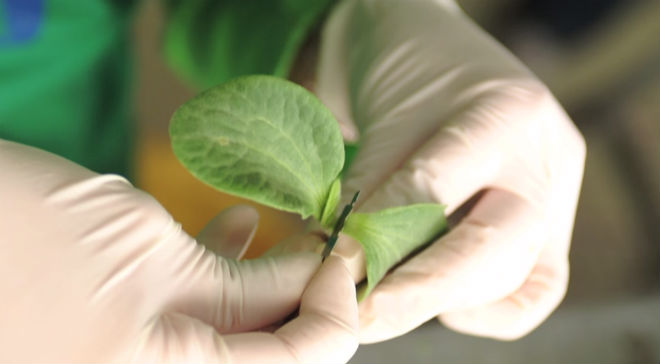Oct 18, 2016How shoot removal, rootstock cultivar affect grafting tomatoes
As small-acreage and organic vegetable growers increasingly utilize high tunnels, researchers are working to determine effective production strategies to help limit soilborne diseases. Grafting interspecific hybrid rootstock has been shown to be effective for tomato growers, but the technique is not without its challenges.
“Small-acreage growers would like to produce grafted plants themselves, but many have difficulty with propagation due to water stress in the scion postgrafting and/or high temperatures,” said Cary Rivard, lead author of study in the August 2016 issue of HortTechnology.
Rivard and colleagues designed trials to determine how rootstock cultivars and scion shoot removal affect tomato yield and biomass; the study contains recommendations for tomato grafting in high tunnels in the central United States.
Rivard said that in a previous regional survey of fruit and vegetable growers, 19 percent were using grafted plants, 56 percent were interested in learning more, and 24 percent were not using grafted plants, but said they would like to.
“In the southeastern US, grafting with interspecific hybrid rootstock has been shown to be effective for tomato growers, but the method had not been tested in the central United States where soilborne disease pressure is low,” Rivard explained.
In the current study, researchers implemented five high tunnel trials and one open-field trial to investigate the efficacy of two rootstock cultivars at increasing tomato fruit the central region of the US, and to test the effect of scion shoot removal (SR) on tomato plant yield and biomass in a commercial production setting.
Results of the trials showed that grafting significantly increased yield in five of the six trials, including four of the five high tunnel trials. Yield increases ranged from 18 percent to 126 percent for standard-grafted plants compared with nongrafted controls. Both rootstocks tested (‘Maxifort’ and ‘Trooper Lite’) were successful at increasing fruit yield, and were similar when compared with each other using the standard tube grafting technique.
The effect of SR on grafted plant performance was not as consistent as grafting across all six of the trials.
“However, some trends can be observed, particularly as fruit yield of grafted plants is related to rootstock vigor,” the scientists said. “Overall, the effect of SR reduced performance of the grafted plants as it relates to final plant yield. Shoot removal during the grafting process may penalize tomato yield and our results suggest that rootstock vigor plays a role.”
“These results suggest that plant growth and ultimately tomato fruit yield is affected negatively by using the SR grafting technique, particularly when less-vigorous rootstock is used,” the researchers said. “The data suggest that grafting is a highly advantageous technology for high tunnel growers in the central region of the United States.”
Source: American Society for Horticultural Science

















